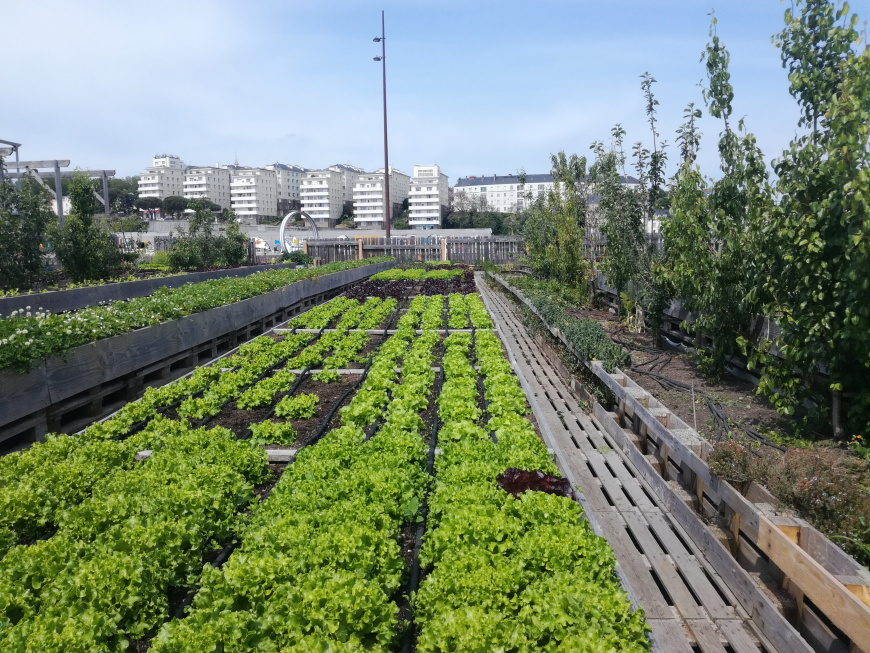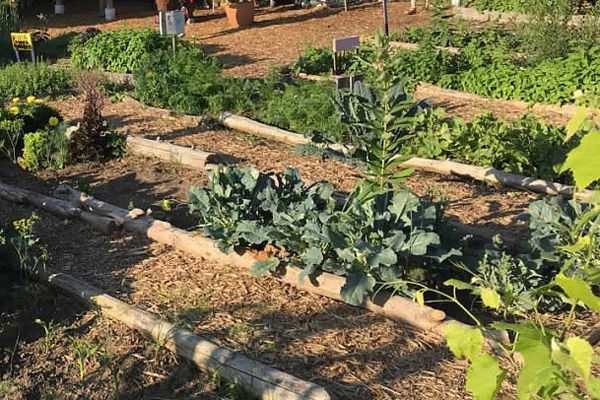The Greatest Guide To City Blooming
Table of ContentsSome Known Facts About City Blooming.How City Blooming can Save You Time, Stress, and Money.The 5-Second Trick For City BloomingThe Ultimate Guide To City BloomingOur City Blooming Diaries
Intrigued in expanding food available for sale in the City of Chicago? Considering starting an area yard? Adjustments to the Chicago Zoning Ordinance allow farming uses like area yards and urban farms in many parts of the city. Below is a checklist of frequently asked inquiries regarding the policies and regulations that cultivators need to consider when preparing an urban agriculture task.
The zoning change does not modify any various other codes managing composting, building licenses, purchasing or leasing City owned residential property, business licenses or environmental contamination. There are existing codes that control these problems and they stay completely effect and may be appropriate to your job. Neighborhood yards are generally possessed or taken care of by public entities, public companies or community-based organizations and maintained by volunteers.
Urban farms expand food that is planned to be marketed, either on a nonprofit or for-profit basis. Because of their business purpose, city ranches call for a company certificate. Yes. A community garden is allowed to sell excess produce that was grown on website if the sales are accessory or secondary to the yard's primary function explained above.
Excitement About City Blooming
Composting is allowed yet just for plant product that is produced and made use of on site. The amount of compost material can not exceed 25 cubic yards at any kind of provided time according to the standards in 7-28-715 of the City's Municipal Code. Yes. Due to the fact that the soil at the majority of new garden sites needs amending, garden compost, dirt, wood chips, or various other products can be gotten to create or boost the expanding area - City gardening.

If a structure permit is required then the hoophouse will certainly be considered an accessory structure. You can learn more concerning the building authorization requirements by speaking to the Department of Buildings. The 25,000-square-foot size limitation is intended to avoid a single area yard from dominating a given block or interfering with the block's existing property or industrial character.
The restriction does not use to gardens situated in Public Open Area (POS) districts. Can there be even more than one community yard that is 25,000 square feet on a solitary block? Secure fencing is not required, nevertheless, gardens that have big vehicle parking locations might be needed to install secure fencing or various other landscape design features.
The City Blooming Diaries
B1 & B2 areas need that all business usage activities be performed indoors. Is fencing required for urban farms? Fences may be required, along with landscape design and testing, for particular auto parking areas and outdoor job or storage space find out here locations depending on place and the particular task taking place.
Yes. Urban farms require structure licenses and zoning authorizations prior to building. Other kinds of city testimonial may be called for depending on details frameworks, activities, dimension, landscape design, licensing, public health and stormwater administration concerns. A number of these requirements are identified in the task style or permitting procedure, nevertheless, the applicant might be responsible to individually identify certain licenses or permits that might be needed.
The Department of Company Matters and Customer Security can aid identify the certain kind of business license that's required. Off road parking is required for a lot of industrial tasks in Chicago. The called for number of parking spaces is based on the number of employees functioning on website and not the square footage of the expanding space.
The Basic Principles Of City Blooming

Yes. An urban farm can offer compost material produced on site, nonetheless, the procedure has to follow the policies in 7-28-715 of the Chicago Municipal Code. Yes. Aquaponic systems are enabled inside your home on city farms in several zoning areas. A zoning testimonial and structure license is needed in order to install frameworks or systems and a business certificate is called for as described over.
As much as five hives or swarms of honey may be kept as an accessory use. Beekeepers need to sign up with the Illinois Division of Agriculture. To learn more concerning the recommended zoning change you may get in touch with the Department of Real Estate and Economic Development, Bureau of Planning and Zoning at 312.744.8563.
Farming in cities and city areas A city farm in Chicago. Urban farming refers to different methods of cultivating. https://moz.com/community/q/user/cityblooming, handling, and distributing food in urban locations. The term likewise applies to the area activities of animal husbandry, tank farming, beekeeping, and gardening in a metropolitan context. Urban agriculture is differentiated from peri-urban agriculture, which occurs in backwoods beside residential areas.
Some Known Facts About City Blooming.
It can entail an activity of natural cultivators, "foodies" and "locavores", who look for to create social media networks based on a common ethos of nature and area holism. These networks can create by means of formal institutional support, coming to be integrated right into regional town as a "transition town" motion for lasting city development.
In either situation, the more straight accessibility to fresh veggie, fruit, and meat items that may be understood through metropolitan farming can boost food safety and security and food security while reducing food miles, leading to reduced greenhouse gas exhausts, thus adding to environment modification mitigation. A few of the very first evidence of urban agriculture originates from Mesopotamia.